Fellowship In The Early Church: What Modern Christians Can Learn
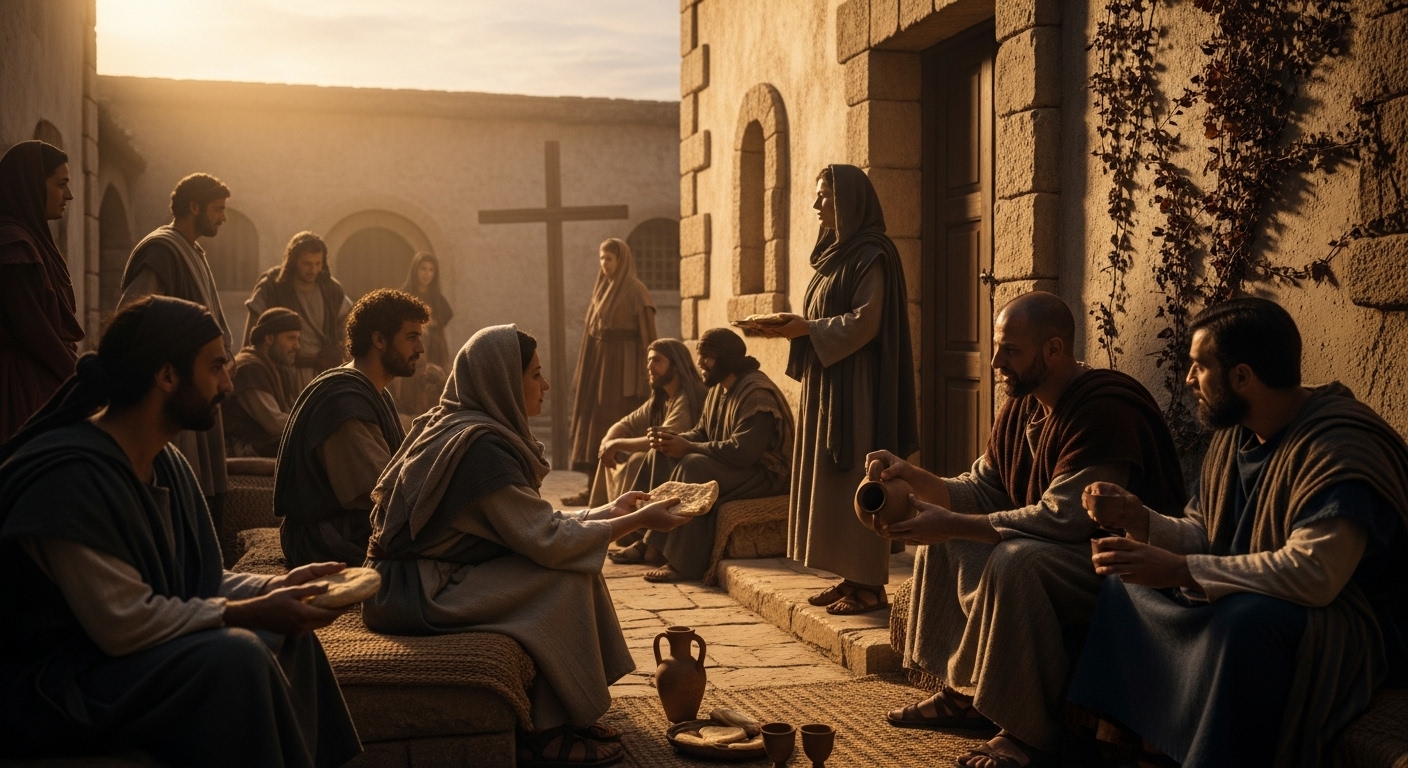
You’ve probably read Acts 2:42-47 and felt the tug: a community so tight, so devoted, so visibly Christian, that people were drawn to them. That passage is the heartbeat of Early Church fellowship, and it keeps pulsing through Christian imagination as a model for how you might live as a disciple in community today. In this article, you’ll walk through the biblical picture, unpack what “fellowship” truly meant in the earliest congregations, and explore practical, sometimes challenging lessons you can adapt for your local church or small group.
To ground us immediately in the primary text, Acts 2:42-47 offers a vivid snapshot of the early believers’ life together, summarizing their devotion to teaching, fellowship, breaking of bread, and prayer. You can read the passage here: Acts 2:42-47. As you read, notice the verbs — they’re action verbs. The Early Church fellowship wasn’t a theory; it was practice.
Why Acts 2:42-47 matters for you
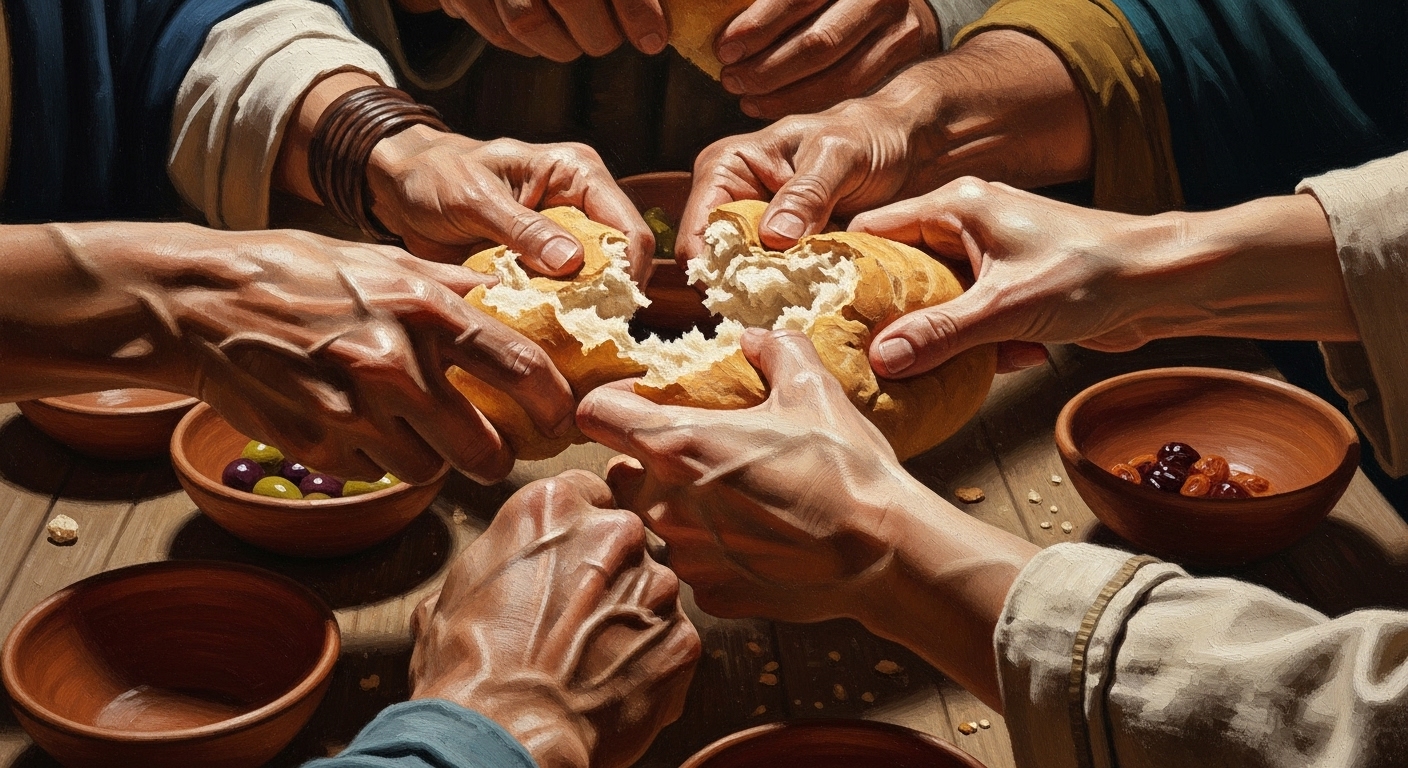
Acts 2:42-47 matters because it’s a blueprint and a mirror. It’s a blueprint for communal life centered on the teaching of the apostles and worship. It’s a mirror that shows how your church life might look if devotion, generosity, and witness were the priority. The scene is both pastoral (meals, prayers, shared belongings) and missional (the Lord added to their number daily). This mix of inward care and outward mission is central to Early Church fellowship and remains relevant to your context.
If you want to see the vividness of that time, consider also how Acts later records the community’s economic sharing and sacrificial giving in Acts 4:32-35, which you can read here: Acts 4:32-35. That passage complements Acts 2 by showing how the community’s unity produced tangible generosity.
What “fellowship” meant in the early church

The Greek word most often translated as “fellowship” is koinonia. Koinonia carries the sense of partnership, sharing, and participation. When the New Testament speaks of fellowship, you find not only social interaction but shared spiritual life, mutual responsibility, and common mission. Early Church fellowship was theological and practical at once: theology shaped daily sharing, and sharing embodied theology.
This is clear in passages that link fellowship to participation in Christ and each other, such as 1 John 1:3: “We proclaim to you what we have seen and heard, so that you also may have fellowship with us. And our fellowship is with the Father and with his Son, Jesus Christ.” Read it here: 1 John 1:3. Your fellowship is therefore not just a human club — it’s rooted in a relationship with God.
Putting it plainly: Early Church fellowship meant being in each other’s lives, sharing spiritual realities (prayer, teaching, sacraments) and material realities (food, money, household). It was communal discipleship, not just communal attendance.
The four pillars in Acts 2:42
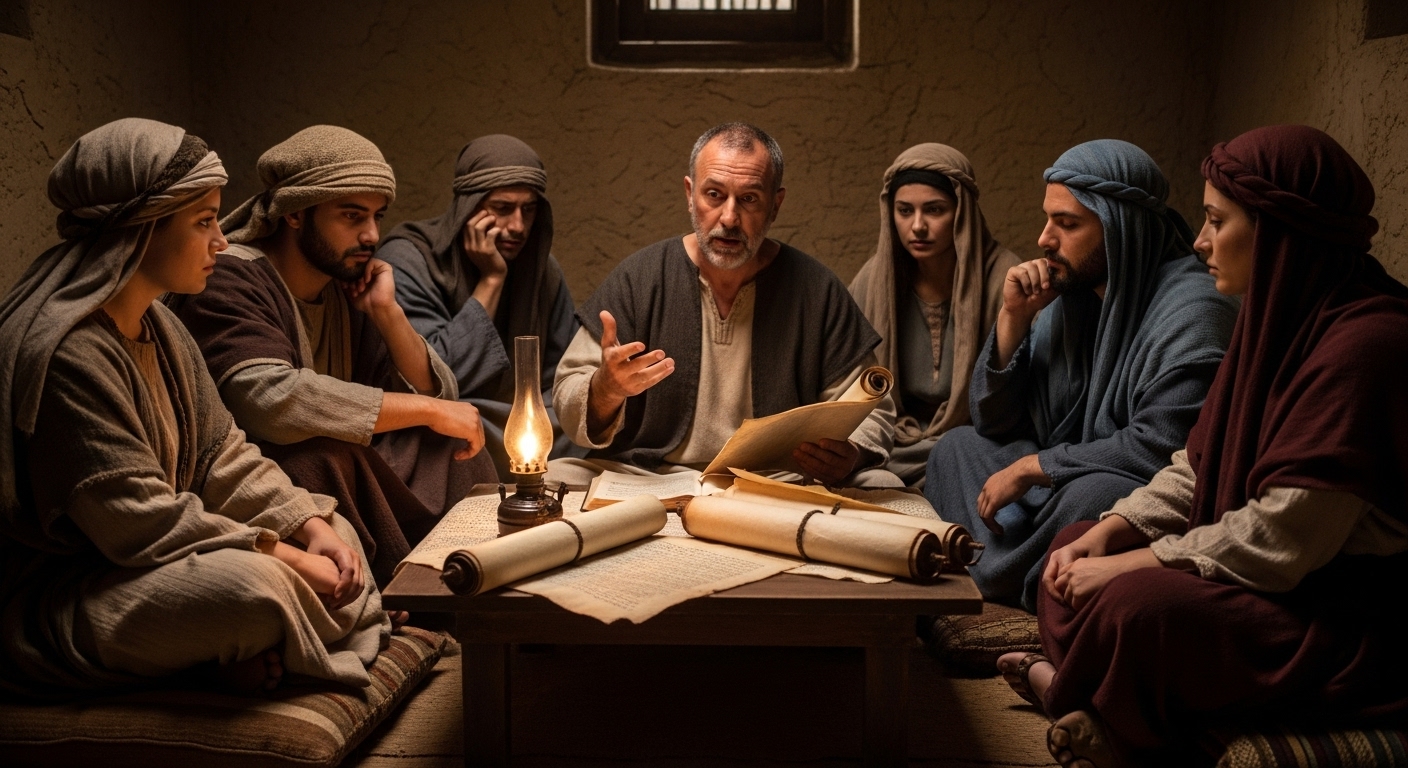
Acts 2:42 lists four practices the early believers devoted themselves to: teaching (the apostles’ teaching), fellowship, breaking of bread, and prayer. These aren’t random; they form a rhythm of learning, belonging, sacrament, and dependence on God. By committing to these practices, you’re not signing up for nostalgia — you’re entering a rhythm that shapes identity and mission in the Early Church fellowship.
Each pillar matters. The apostles’ teaching provided doctrinal grounding and narrative cohesion. Fellowship created mutual accountability and care. Breaking of bread embodied remembering and unity (readers often connect it to both communal meals and the Lord’s Supper). Prayer kept the community dependent on God and guided by the Spirit. Together, they fostered a holistic Christian life.
Shared possessions and radical generosity
One striking feature of Early Church fellowship is the willingness to share possessions so that no one was in need. Acts 4:32-35 captures this spirit vividly: “All the believers were one in heart and mind. No one claimed that any of their possessions was their own, but they shared everything they had.” Read it here: Acts 4:32-35.
This wasn’t enforced communism; it was voluntary, Spirit-led generosity. Some sold property or possessions and brought the proceeds to the apostles to be distributed according to need. It points to a community with a strong sense of mutual responsibility. For you today, this raises hard questions: How willing are you to reorient possessions toward communal needs? How does generosity reflect your identity as part of God’s people?
The Early Church practiced a theology of abundance — trusting God’s provision and prioritizing neighborly care. That tension — holding things lightly while stewarding them faithfully — is a timeless lesson for personal stewardship and church practices like benevolence funds, communal care ministries, or cooperative housing in some modern expressions.
Practical reflections on generosity
You can translate the early practice into contemporary ways: organized benevolence funds, shared community resources, or encouraging members to make sacrificial gifts for specific community needs. The key isn’t replicating exact economics but cultivating generosity as a habit and a communal expectation shaped by the gospel.
Consider how your small group or church handles needs. Do you default to anonymity and bureaucracy, or is there room for relational giving, where neighbors know neighbors and help directly? The Early Church fellowship leaned relational, which often made generosity faster and more personal.

Worship, joy, and witness
Acts 2 shows a community that worshipped joyfully — praising God together and enjoying the goodwill of the people. The passage concludes that “the Lord added to their number daily those who were being saved.” Read it again: Acts 2:47. Worship and communal joy were not merely internal benefits; they were evangelistic signs.
Early Church fellowship combined sincere worship with visible generosity, and that combination made them attractive. People were affected not only by sermons but by how Christians loved and lived together. This is the John 13:34–35 dynamic: your love for one another marks you as disciples. Read John’s words here: John 13:34–35.
That connection between worship and witness can challenge your church’s priorities. When worship becomes only a program for insiders, it loses its public witness. But when your worship overflows into acts of mercy and hospitality, people notice and are drawn to the gospel embodied in community.
Joy as a spiritual discipline
Joy in the early church wasn’t mere sentiment but a spiritual habit shaped by prayer, gratitude, and shared life. You can cultivate joy by celebrating small victories, remembering God’s faithfulness together, and practicing hospitality. Joy becomes contagious when it’s grounded in authentic community and sacrificial love.
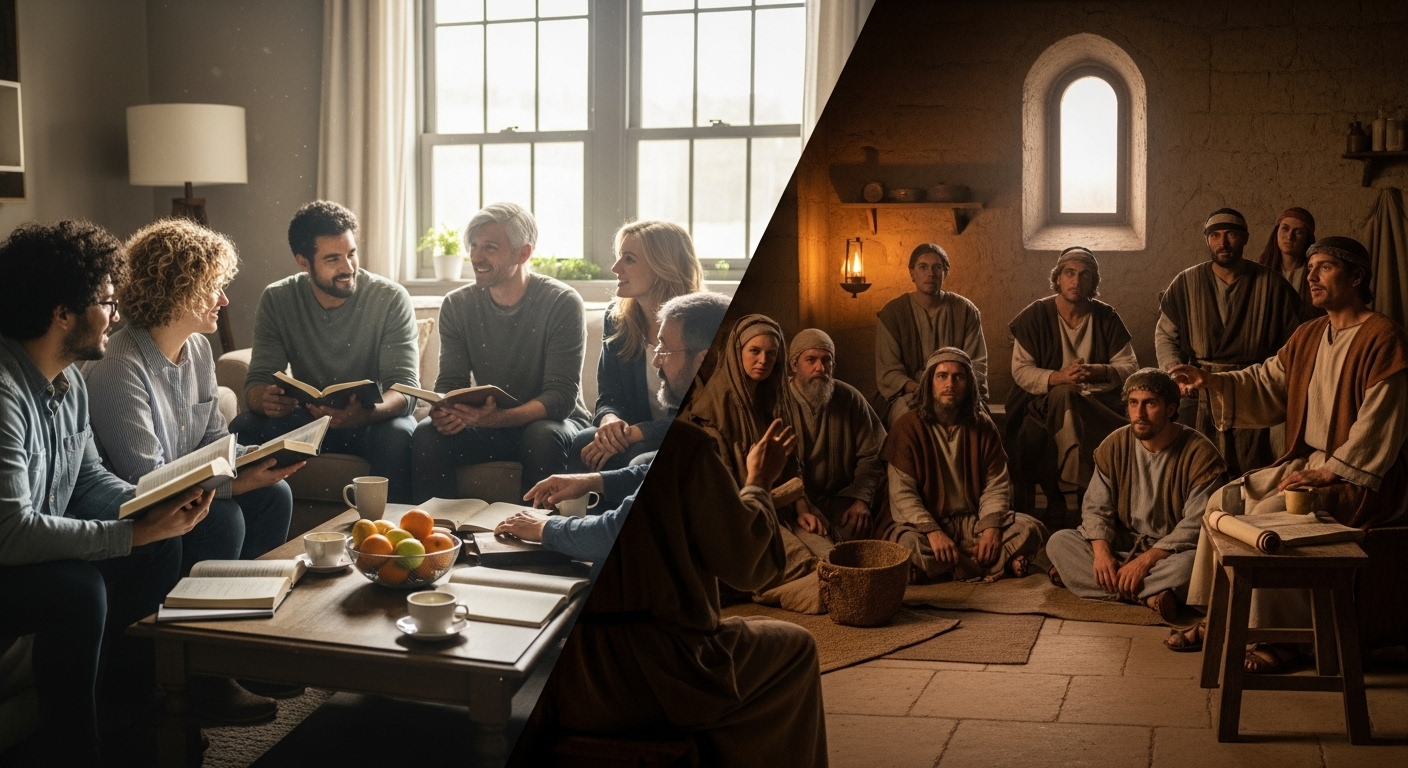
Leadership, structure, and conflict resolution
The Early Church was not utopian. As the movement grew, challenges arose — questions of leadership, distribution of food, and cultural differences. Acts 6:1–7 narrates a crucial example: a dispute over food distribution to widows led to the appointment of deacons to oversee fair distribution, so apostles could focus on prayer and the ministry of the word. Read it here: Acts 6:1–7.
This story teaches you that good fellowship needs good systems. Structures aren’t a betrayal of spontaneity; they are tools for health. The early community appointed leaders to manage practical needs, protecting the community’s mission and unity. Leadership in the earliest churches focused on service, teaching, and protecting the unity of the body.
You can learn to distinguish between the ministry of the elders/leadership and the role of every member. Leaders shepherd and coordinate; the community embodies the ministry of mutual care. Conflict becomes an opportunity for clarity when handled with humility, Scripture-rooted wisdom, and established processes.
Roles of elders and deacons in the Early Church
Elders and deacons in the earliest churches had distinct but complementary roles — teaching, prayer, shepherding, and handling practical needs. This division supported sustainable ministry. For your church, clearly defined roles help people serve without burnout and allow leaders to protect doctrinal fidelity and pastoral care.

Community as formation: discipleship in shared life
Early Church fellowship was formative. When you lived with believers — eating together, praying, learning Scripture — discipleship happened naturally. This formation was not only in formal teaching but in rhythms, language, and practices learned by proximity. Romans 12:4–5, which speaks about believers being one body, helps you see how identity is formed in communal life: Romans 12:4–5.
If you want discipleship that sticks, you need more than seminars. You need shared life. Habitual practices — hospitality, confession, accountability, shared service — create environments where formation is real. Early Church fellowship shows that discipleship happens when life is integrated: belief shapes behavior, and behavior shapes belief.
Small groups and household churches as translated forms
A practical contemporary application is small groups or household churches. They mirror the intimacy and accountability of early gatherings and are natural places for discipleship to happen. You don’t need to send everyone to a formal course; you need intentional spaces where people read Scripture together, pray together, serve each other, and practice confession and encouragement.

Missional impulse: outward-looking fellowship
Early Church fellowship had a missionary dimension. Their unity and generosity were not merely for internal comfort but became a witness to neighbors and strangers. The community’s life drew others, and the gospel spread. Acts repeatedly shows the link between internal devotion and external mission, often through ordinary interactions: hospitality, testimonies, and shared meals.
This missional impulse should shape your congregation’s priorities. If your fellowship becomes inward-facing, it may protect members but lose witness. The early churches balanced inward care with outward proclamation, so your fellowship also needs intentional outwardness: inviting neighbors, engaging local needs, and acting as a visible sign of Christ’s love.
Practical missional steps
You can integrate missional rhythms by making hospitality regular, partnering with local service organizations, and equipping members to share their faith naturally. Encourage members to live missionally in their workplaces and neighborhoods, supported by a community that prays and sends them.
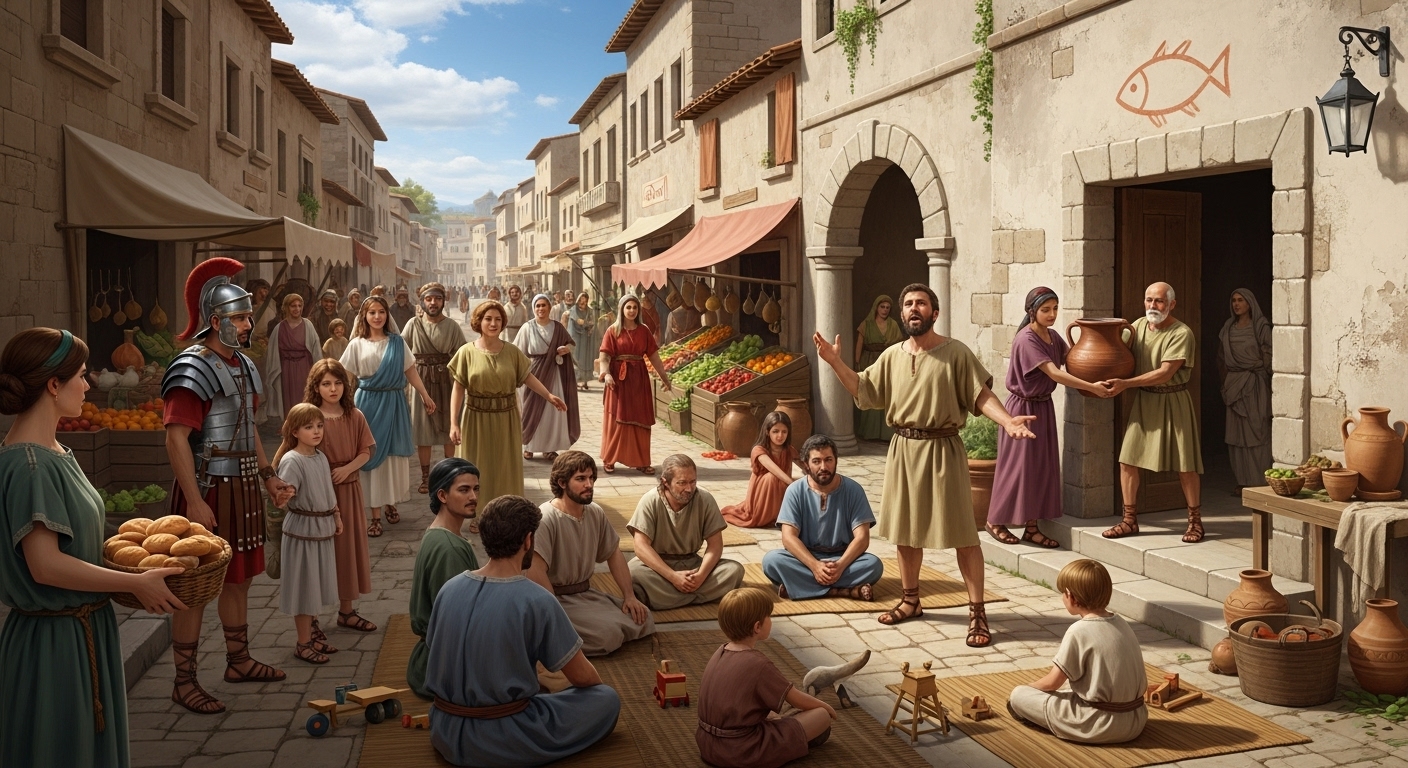
Tensions and cautions: don’t romanticize the past
It’s important not to romanticize Early Church fellowship as a flawless golden age. Early communities faced theological disputes, persecution, and internal struggles. The New Testament contains admonitions about false teaching, hypocrisy, and division — reminders that koinonia can be fragile and must be guarded by sound doctrine and repentance.
You should learn from the early example without idolizing it. Some modern attempts to replicate the early church mistakenly impose a uniform structure onto diverse contexts or pressure people into unhealthy communal expectations. Fellowship should be life-giving, not coercive. Where you see power imbalances, lack of accountability, or cultic tendencies, that’s a red flag, not a model to emulate.
Balance freedom and structure
The early churches balanced Spirit-led freedom with apostolic teaching and pastoral oversight. That’s instructive: freedom without teaching leads to disorder, while teaching without warmth leads to dead orthodoxy. Your local church needs both the Spirit’s freedom and the stability of Scripture and pastoral care.
Practical steps to cultivate Early Church fellowship today
You’re ready for some practical, concrete steps. These are not gimmicks; they’re practices that embody the spirit of Early Church fellowship in modern contexts.
- Prioritize small groups that focus on Scripture, prayer, and meals. These replicate the house-church rhythm where formation occurs naturally.
- Develop transparent benevolence systems that allow relational giving. Encourage people to know and support each other’s needs rather than outsourcing every need to an impersonal fund.
- Make hospitality a regular spiritual discipline. Invite newcomers and neighbors into your home for food and conversation.
- Equip leaders to steward both teaching and the practical needs of the church. Use deacons or teams to manage logistics so pastors can focus on teaching and prayer.
- Plan communal meals or shared celebrations that include the Lord’s Supper and fellowship meals, intentionally integrating worship and social life.
- Foster a culture of confession, accountability, and restoration. Create safe spaces where people can be honest and receive pastoral care.
These steps aren’t exhaustive, but they’re faithful translations of the patterns you see in the earliest communities.
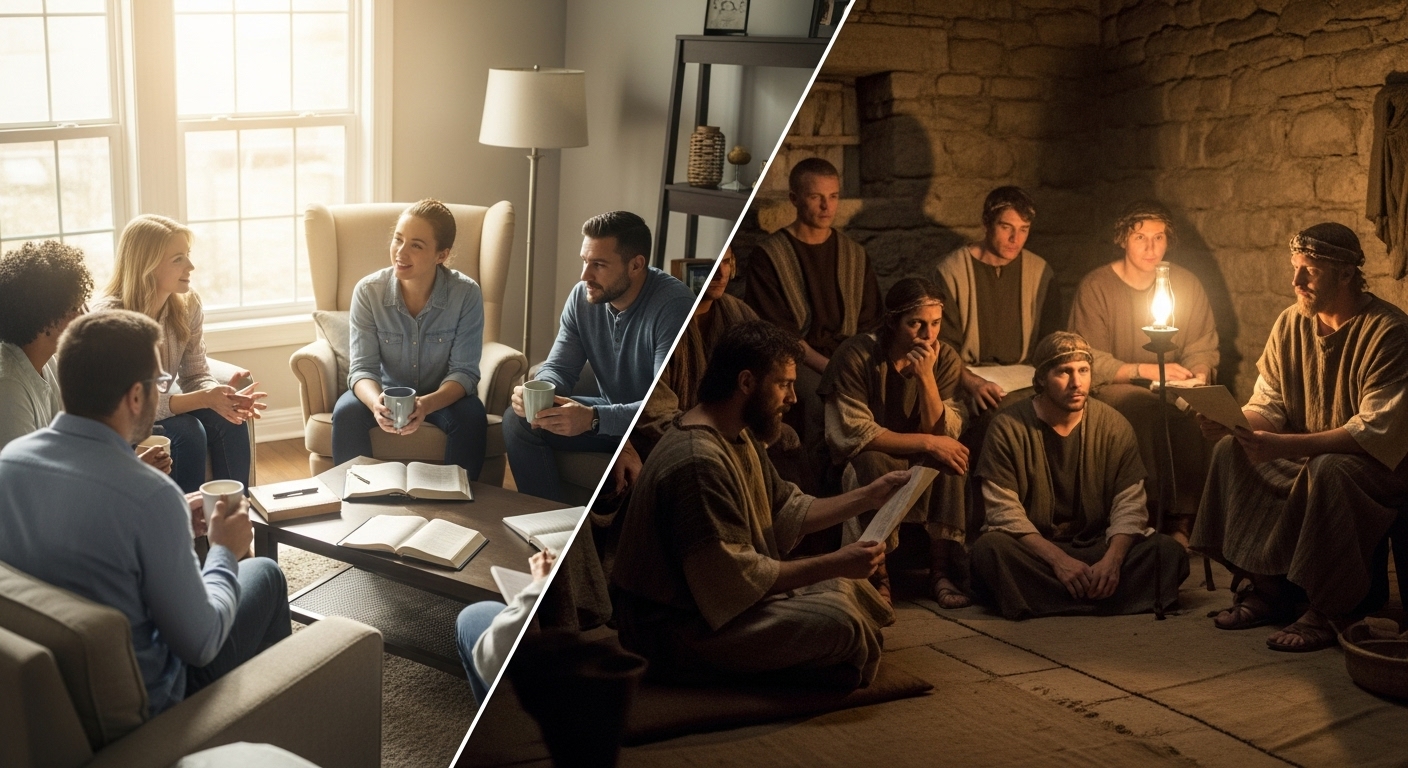
Digital fellowship: translating koinonia online
You might wonder: can Early Church fellowship be translated into online spaces? The short answer is yes, but not without care. Digital communities can facilitate teaching, prayer, and mutual support, but they risk surface-level interactions and weak accountability. Use technology to supplement, not replace, embodied fellowship.
Practical tips for digital fellowship: encourage video-based small groups for deeper connection, create structures for mutual care (like a digital care team), and prioritize occasional in-person gatherings when possible. The goal is to maintain relational depth and sacramental practice even when using digital tools.
When online is helpful and when it’s not
Online fellowship is great for connecting dispersed members, maintaining contact during crises, and delivering teaching. It’s less effective for sacramental participation (which is ideally embodied), pastoral counseling that requires presence, and long-term spiritual formation that needs in-person rhythms. Use digital tools wisely as part of a mixed ecology of church life.
Measuring success: signs of healthy fellowship
How will you know if your efforts toward Early Church fellowship are working? Look for signs such as mutual care in crises, consistent generosity, growth in discipleship (not just attendance), joy in worship, and effective mission in your neighborhood. Hebrews 10:24-25 highlights the importance of not neglecting meeting together but encouraging one another: Hebrews 10:24–25.
Healthy fellowship results in transformed lives and a credible witness. Numbers matter to an extent, but the quality of relationships, the depth of discipleship, and the community’s ability to meet needs reveal more about real vitality.
Avoiding manufactured metrics
Beware of metrics that are easy to count but hard to measure spiritually — attendance alone, social media likes, or programmatic activity. Prioritize relational health indicators: are people confessing sin and receiving grace? Are needs met? Is the gospel being verbally shared? Those are the fruit of a fellowship that mirrors the early church.
Final reflection: embodying Early Church fellowship where you are
The Early Church fellowship invites you to a gospel-shaped community — one defined by shared life, sacrificial generosity, joyful worship, and outward mission. It’s not a blueprint you must copy letter-for-letter, but a pattern you can adapt to your context with creativity and fidelity. Your task is to be faithful where you are: in your family, workplace, neighborhood, and local church.
Start small. Form a meal-centered small group. Practice transparent stewardship. Prioritize prayer and Scripture in communal rhythms. Keep the mission outward-focused. These steps will help you embody the spirit of the earliest believers and make your local church a credible sign of Christ’s kingdom.

Explore More
For further reading and encouragement, check out these posts:
👉 7 Bible Verses About Faith in Hard Times
👉 Job’s Faith: What We Can Learn From His Trials
👉 How To Trust God When Everything Falls Apart
👉 Why God Allows Suffering – A Biblical Perspective
👉 Faith Over Fear: How To Stand Strong In Uncertain Seasons
👉 How To Encourage Someone Struggling With Their Faith
👉 5 Prayers for Strength When You’re Feeling Weak

📘 Jesus and the Woman Caught in Adultery – Grace and Mercy Over Judgement
A powerful retelling of John 8:1-11. This book brings to life the depth of forgiveness, mercy, and God’s unwavering love.
👉 Check it now on Amazon 🛒💥
🔥 “Every great message deserves a home online.” 🌍💬🏡
Don’t let your calling stay hidden. Start a Christian blog or website using Hostinger — with 99.9% uptime, a free domain, and SSL, your voice can shine for God’s glory anytime, anywhere.
💥 Begin today. 🛒 Try it RISK-FREE! ✅
✝️ “Your body is God’s temple — care for it with purpose.” 💪💖🏛️
Renew your energy and restore balance naturally. Mitolyn helps support a healthy metabolism, giving you the vitality to live out God’s calling with strength and confidence.
🔥 Unlock Your Metabolic Power! ⚡Burn More Calories & Feel Great With Mitolyn. 💪
👉 Start Today. 🚀 Check Price Now. 🛒💰
💰 As a ClickBank & Amazon Affiliate, I earn from qualifying purchases.
📖 Acknowledgment: All Bible verses referenced in this article were accessed via Bible Gateway (or Bible Hub).
🚀 Want to explore more? 👉 Dive into our new post on Why Jesus? and experience the 🔥 life-changing truth of the Gospel!





